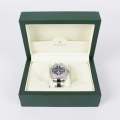Do you ever wonder how replicas compare to originals when it comes to design? From furniture to fashion, there are often replicas of popular designs that look identical to the original. But do the materials used in the replicas and originals truly match up? In this article, we'll explore the material differences between replicas and originals so you can make an informed decision when it comes to purchasing a product that looks great and lasts for years. We'll discuss why some materials are used in replicas, why certain materials are preferred for originals, and how these differences affect the quality of the product. Keep reading to find out more about the design differences between replicas and originals!The most obvious difference between replicas and originals is the quality of the materials used to make them.
Replicas are usually made from cheaper, lower-quality materials, while originals are made from higher-quality materials that tend to last longer. This is often because replicas are mass-produced and made quickly, while originals take more time and craftsmanship to create. One of the other key differences between replicas and originals is the attention to detail. Originals often feature more intricate details or embellishments than replicas do, which can make them look more unique or luxurious. For example, a replica handbag might have a simple, plain design, while an original handbag might feature intricate stitching, metal hardware, or embossed leather details. Design differences can also be found in the construction of replicas and originals.
Originals are usually built with higher-quality craftsmanship, using techniques such as hand-stitching or hand-embroidery. Replicas are typically mass-produced with machine-made stitching or embellishments. This means that originals will usually be more durable and have a longer lifespan than replicas. Finally, replicas and originals can also differ in terms of branding. Originals will usually feature the designer's logo or insignia on the item, while replicas will not.
This is an important distinction to make when buying items, as it helps to identify which items are genuine and which are not. Overall, there are several key differences between replicas and originals when it comes to design. Replicas are usually made from lower-quality materials and lack intricate details or craftsmanship, while originals feature higher-quality materials and more intricate details. Additionally, originals will usually feature branding or logos that replicas do not have. These distinctions are important to consider when shopping for items online or in stores.
Branding
Branding Finally, replicas and originals can also differ in terms of branding.This is an important distinction that should be noted when buying a replica item instead of an original, as it can be difficult to tell the two apart. The branding is one of the main ways of differentiating between an original and a replica. For example, if you were shopping for a designer handbag, you would likely find that the original designer bag features the designer's logo, while replicas will not. This is especially true for luxury items, as the designer's logo or insignia is often what makes these items so desirable. Therefore, if you are shopping for a replica item, it is important to make sure that it does not feature the designer's logo or insignia.
Material Differences
The most obvious difference between replicas and originals is the quality of the materials used to make them.Replicas are usually made from cheaper, lower-quality materials, while originals are made from higher-quality materials that tend to last longer. These materials can range from plastics and wood to metals and fabrics. Replicas often use a mix of materials, but they tend to be of lower quality than the originals. The level of craftsmanship is also a major factor when comparing replicas and originals. Replicas are typically mass-produced with minimal attention to detail, whereas originals are often handmade with greater attention to detail.
This can affect the overall look and feel of the items, as well as the durability. The construction techniques used in replicas may also be of lower quality than those used for originals. For example, replica furniture may not be assembled using the same techniques as originals. This could result in a weaker structure or less sturdy frame. Finally, the cost of replicas is usually much lower than that of originals. This is because replicas are usually made in bulk and require fewer resources to make.
Originals, on the other hand, are often made by skilled craftsmen who use more expensive materials.
Construction
Design differences can also be found in the construction of replicas and originals. Originals are typically crafted with higher-quality techniques, such as hand-stitching or hand-embroidery, while replicas are often mass-produced with machine-made stitching or embellishments. When it comes to construction, the differences between replicas and originals become quite apparent. Originals often feature more intricate detailing and a much higher level of craftsmanship. The use of higher-quality materials and techniques is also a common feature of originals.Replicas, on the other hand, are usually mass-produced with lower-quality materials and techniques. When it comes to the longevity and durability of an item, the construction differences can have a major impact. Originals are typically sturdier and more likely to last for years to come, while replicas may not hold up as well over time. The construction techniques used can also affect the overall look and feel of the item. Higher-quality craftsmanship can create a unique aesthetic that is not easily replicated in a mass-produced item.
Attention to Detail
One of the other key differences between replicas and originals is the attention to detail. Originals often feature more intricate details or embellishments than replicas do, which can make them look more unique or luxurious. These details can range from textured surfaces, intricate patterns, or fine engravings.On the other hand, replicas may only have a few basic details and lack any sort of high-end aesthetics. This can be especially noticeable in products like watches, jewelry, furniture, and even apparel. The attention to detail in an original piece is often what sets it apart from a replica. It is also what makes it more expensive than a replica. The quality materials used in the production of an original piece are usually of much higher quality than those used to produce a replica. This attention to detail is also what allows an original to last longer than a replica.
By using higher-quality materials and focusing on detail, an original piece will be more durable and last longer than a replica. The differences in attention to detail between replicas and originals are substantial. Originals often feature more intricate details and higher-quality materials than replicas, which can make them look more unique and luxurious. Overall, there are several key differences between replicas and originals when it comes to design. Material differences, attention to detail, construction quality, and branding are all important factors to consider when comparing replicas and originals. It is important to be aware of these differences in order to ensure that you are getting an original item.
Authentic items often require more investment, but they will last longer and be of better quality than a replica. Additionally, authentic items may come with warranties or guarantees, while replicas are often sold “as is”. Overall, it is important to consider the material differences, attention to detail, construction quality, and branding when shopping for items online or in stores, as they can help you identify which items are genuine and which are not.






